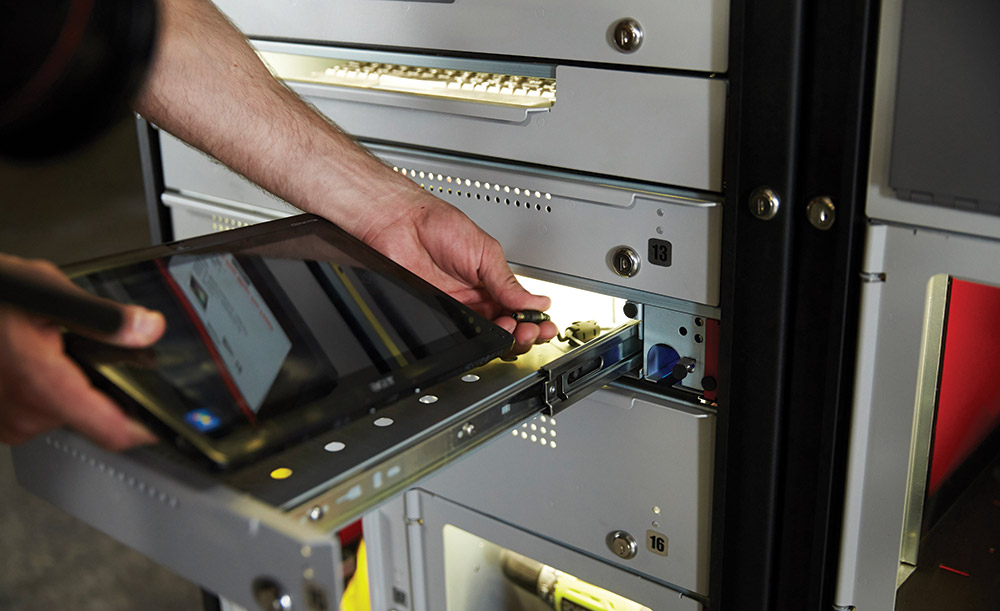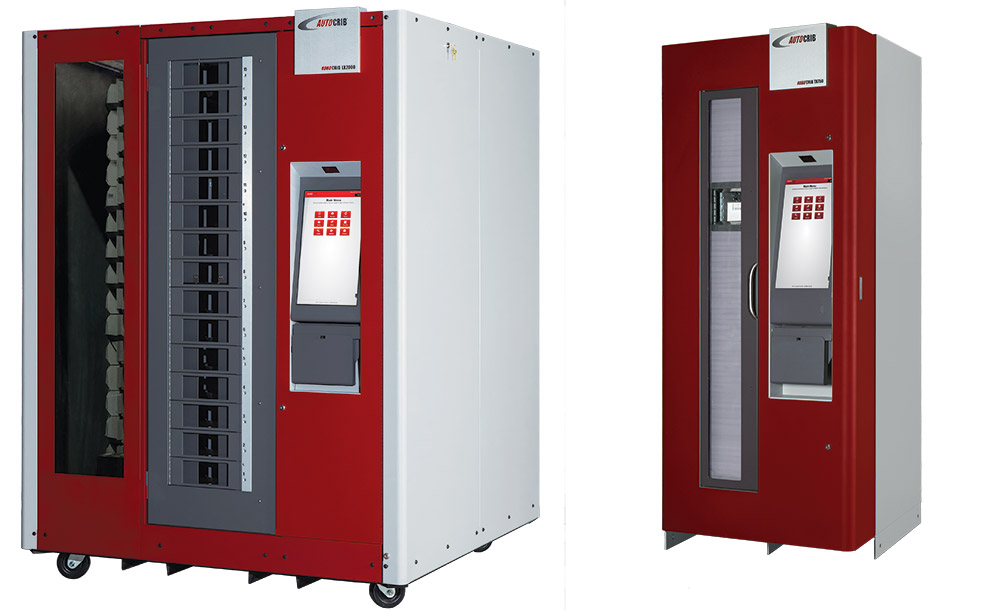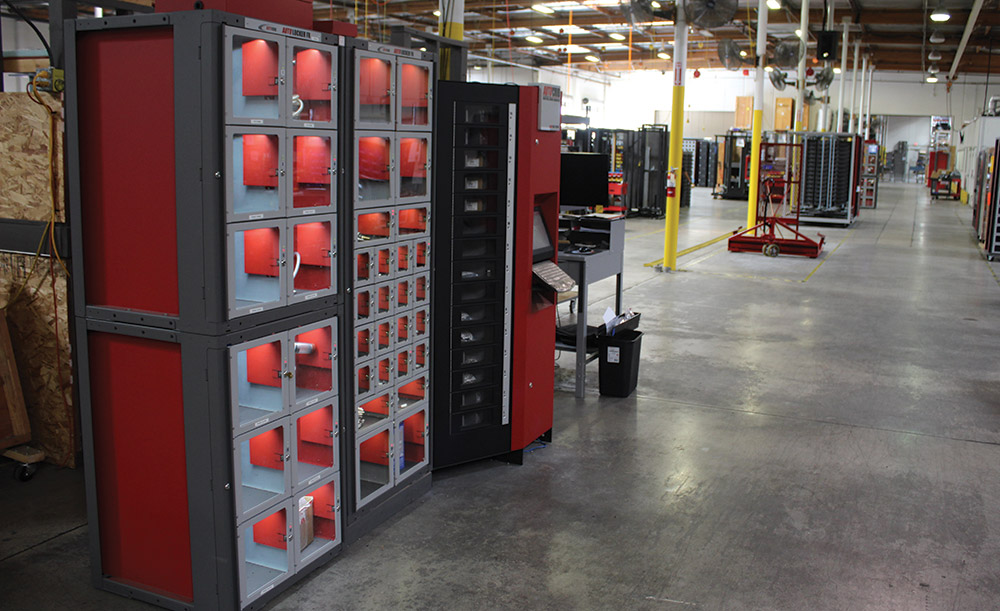Industrial vending machines help eliminate inventory bottlenecks and control costs
October 2018 - Companies know what they purchase. But once that inventory comes into a facility, keeping tabs on where it’s going—especially for consumable items like gloves, safety glasses and fasteners—is a more difficult task. A couple of gloves here and a handful of washers there might not seem like a big deal. But these small things multiply quickly and could add significant costs to the bottom line—as well as potentially shutting down production if a crucial bolt or washer is out of stock.
Industrial vending machines can help companies improve productivity and cut costs by tracking inventory. Unlike beverage or candy vending machines, they are “purpose-built point-of-work machines, designed for the industrial environment with a sophisticated software system that uses best practices and industry standards to manage inventory,” says Jason Racette, regional sales manager–northeast U.S. and eastern Canada, for AutoCrib Inc. The Tustin, California-based company has more than 20 years of experience developing, manufacturing and marketing industrial dispensing solutions. “When industrial vending comes up, people often picture a typical coil candy bar machine, but we have taken it to the next level.” At AutoCrib, industrial vending refers to carousel-based machines, visual recognition, RFID technology, smart locker systems, weight-sensing machines and vertical lifts.

“The fundamental principle on which we build our systems is based on users having the right item in the right place at the right time,” says Racette. This allows companies to address a vast array of inventory management challenges, including stockouts, excess inventory, waste, fraud and abuse.
“One of the hidden challenges that many companies don’t realize they have is the enormous amount of lost time associated with the hunting for the proper item for the specific task they want to accomplish. Having access in a point-of-use vending machine greatly reduces this non-value-added activity,” adds Steve Pixley, AutoCrib’s founder and president.
Anything goes
Industrial vending machines can handle both large and small inventory, including tools, safety supplies, gloves, fittings, fasteners, testing equipment, gauges, laptops and spare parts. “Our systems can manage anything from as small as a #2 washer to as large as a complete [Boeing] 737 wheel assembly,” Racette says, noting some of the unique items the company has vended include bank rolls for casino employees; firearms, ammunition, body cameras and bulletproof vests for law enforcement officers; and chain saws and other heavy equipment for utility companies and municipal governments.
“We have 15 different types of machines that utilize different technologies because one size doesn’t fit all,” Racette says.
“We reverse engineer the solution to fit the customer’s needs. We take into account their challenges, items they want to manage, the environment, the size of the facility and space constraints, and the level of security they want for the items,” adds Pixley.

Carousel-style machines are a popular choice for AutoCrib’s customers because they pack a large amount of inventory into a small space. “The smallest carousel machine we have is capable of storing 628 unique items in a 39-in. by 39-in. footprint,” Racette says. “The largest, which can store 2,570 items, takes up about 5 ft. by 5 ft. of space. Carousels really shine when you are inventorying multiple unique SKUs or a mix of expendable items,” he says, referring to parts that won’t be returned to the machine. On the other hand, “lockers typically have one item [a reusable tool, for example] stored to help control the transaction. They also can do check in and check out.”
The machines also can integrate the capability to keep track of items based on weight, Pixley says. “When users are given access to one or more fastener types, they can take a handful or a cupful, and the system automatically weighs the remaining amount, does the math and determines what they took.
Another option allows an employee to take a handful of fasteners out of a bin, set them on a scale, and the machine will weigh what was taken. “This can be accurate down to 0.0002 of a kilo,” Pixley notes.
Intuitive design
AutoCrib designs its machine software to be familiar and intuitive for employees. “If you’ve used a smart phone, an ATM machine or purchased something online, you can use the AutoCrib industrial vending system,” Racette says. The machines integrate with the same technology used for door access systems or time clocks—RFID proximity badges, bar code badges, magnetic swipe, biometrics or keying in an employee number.
“The first step is to log into the machine, and then employees can search through the database using a number of fields, including part number, description, category or even common slang terms.” And, as the employee uses the machine, it will develop a personalized favorites list based on transaction history.

The fully automated restocking process also is customizable to fit seamlessly into a customer’s workflow. “Purchase orders are sent directly to vendors based on the previously set reorder levels,” Racette says. “Once the items are delivered, the receiving and restocking process can be completed at the same time with the machine walking you through the restocking process and instructing you on the proper bin location for the inventory.”
Crunching numbers
Consistent inventory tracking ensures employees always have what they need to do their jobs, which eliminates bad habits and helps control costs. An AutoCrib customer who was dealing with out-of-control glove consumption and hoarding implemented 15 machines and reduced glove consumption by 70 percent—an overall savings of $72,000 per year. Another user, a defense contractor, was losing between $6,000 and $10,000 per month due to misplaced and lost precision measuring tools. “The AutoCrib locker system paid for itself in 60 days by not only enforcing accountability for every tool but also preventing uncalibrated gauges from being used,” Racette says.
“If the supply chain is poorly managed, the inventory comes in and none of the employees believe the inventory will last them until the next restock,” Pixley notes. “So they take much more than they need, and then there’s not enough inventory to go around. The next time inventory shows up, more people hoard and take more than they need. This behavior makes it hard to catch up, and companies try to compensate by buying more and more unneeded inventory.”

By putting items in a vending machine and controlling who is taking it and holding them accountable, “you stop that hoarding problem. That alone can pay for a system,” he explains.
Companies concerned about the up-front costs of a system can take advantage of AutoCrib’s VAAS (vending as a service) program, which “substantially lowers the [initial] capital required,” Racette says. VAAS allows companies to use the vending equipment of their choice in their facility for a fixed monthly rental fee. Companies use the equipment and AutoCrib maintains it and administers it, including running and sharing reports with the client.
Every facility has different inventory requirements, sticking points and data analysis needs. The goal of an AutoCrib industrial vending machine is to fit into a current workflow seamlessly and start delivering results immediately.
“We want to deliver the right machine for the application and use the right blend of features and the right piece of hardware,” Racette says.
AutoCrib Inc.
Tustin, California
800/671-6501

